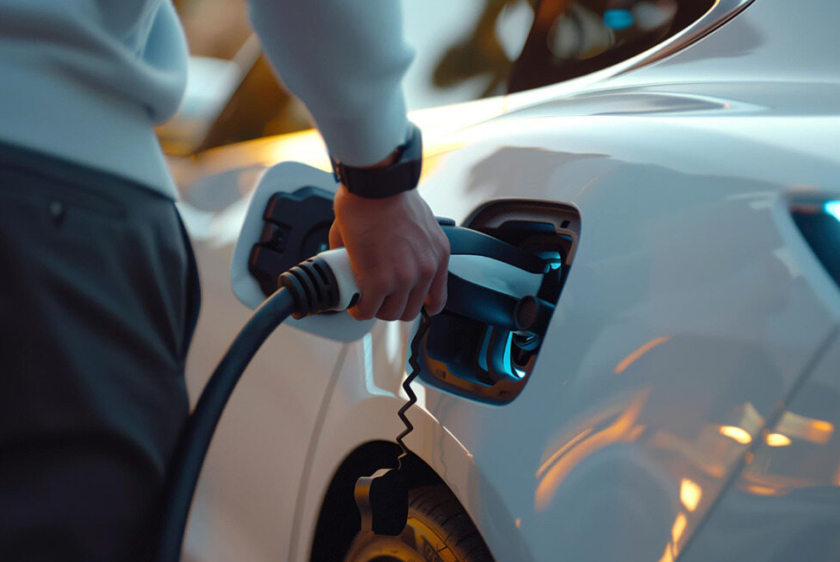Hey there, electric car owners! Looking for a quick and easy way to charge up your ride? Quikrev has got you covered with our EVSE charging solutions. Read that article and Say goodbye to waiting around for hours.
What is EVSE?
EVSE stands for Electric Vehicle Supply Equipment, which is essentially the infrastructure that allows electric vehicles to be charged. EVSE systems provide the necessary electrical connections and communications between the vehicle and the power source, ensuring safe and efficient charging. In this article, we will explore how EVSE systems work, the core components of EVSE, the different types of EVSE available, as well as the benefits and future trends of this technology.
How EVSE Systems Work
EVSE systems work by providing a connection between the electric vehicle and the power source, typically a charging station. The system controls the flow of electricity to ensure safe and efficient charging of the vehicle’s battery.
When the electric vehicle is plugged into the EVSE, communication protocols are used to establish a connection and authenticate the user. Once the connection is established, the EVSE controls the flow of electricity based on the vehicle’s charging requirements.
Core Components of EVSE systems
The core components of an EVSE system include the charging station, the charging cable, and the connector. The charging station houses the electronics and communication interface, while the charging cable connects the station to the vehicle. The connector is the interface that physically connects the charging cable to the vehicle’s port. These components work together to provide a seamless charging experience for electric vehicle owners.
Types of EVSE Explained
Level 1 Charging Stations
Level 1 charging stations are the most basic form of EVSE and provide a standard household outlet for charging electric vehicles. These stations are easy to install and can be used with any electric vehicle. However, they offer the slowest charging speeds and are best suited for overnight charging at home.
Level 2 Charging Innovations
Level 2 charging stations offer faster charging speeds compared to Level 1 stations. These stations are typically installed in public locations, workplaces, and residential settings. Level 2 charging is more convenient for drivers on the go and can provide a full charge in a matter of hours.
DC Fast Charging: The Future of EVSE
DC Fast Charging stations are designed to provide rapid charging for electric vehicles. These stations can charge a vehicle to 80% capacity in as little as 30 minutes, making them ideal for long-distance travel and quick charging stops. DC Fast Charging is considered the future of EVSE technology due to its speed and convenience.
Common Features of EVSE
Some common features of EVSE systems include smart charging capabilities, remote monitoring, and payment options. Smart charging allows users to schedule charging times, monitor energy usage, and take advantage of off-peak electricity rates.
Remote monitoring enables operators to track usage, monitor equipment health, and troubleshoot issues remotely. Payment options allow users to pay for charging services through various methods, such as RFID cards or mobile apps.
Benefits of EVSE
The benefits of EVSE include reduced emissions, lower operating costs, and increased convenience for electric vehicle owners. By providing a reliable and convenient charging infrastructure, EVSE systems contribute to the adoption of electric vehicles and help reduce greenhouse gas emissions. Additionally, electric vehicle owners can save money on fuel costs and maintenance by using EVSE for charging.
The Role of EVSE in Smart Charging and Grid Integration
EVSE plays a crucial role in smart charging and grid integration by enabling communication between electric vehicles, charging stations, and the electric grid. Smart charging technologies allow EVSE systems to optimize charging schedules based on grid demand, renewable energy availability, and user preferences. By integrating EVSE with the grid, operators can balance electricity supply and demand, reduce peak load, and enhance grid reliability.
The Environmental Impact of EVSE
The installation and operation of EVSE systems have a positive environmental impact by reducing greenhouse gas emissions and air pollution. By encouraging the use of electric vehicles, EVSE helps reduce reliance on fossil fuels and promote the transition to clean energy sources. Additionally, EVSE can support renewable energy integration by enabling off-peak charging and demand response programs.
Installation and Maintenance of EVSE
The installation and maintenance of EVSE systems require careful planning, design, and execution to ensure reliable and safe operation. Installation involves site assessment, equipment selection, electrical upgrades, and permitting. Maintenance tasks include regular inspection, cleaning, software updates, and equipment testing. Proper installation and maintenance practices can extend the lifespan of EVSE systems and ensure optimal performance.
Future Trends in EVSE Technology
The future of EVSE technology is focused on faster charging speeds, enhanced user experience, and seamless integration with smart grids. Innovations such as wireless charging, bidirectional charging, and vehicle-to-grid interaction are shaping the future of EVSE systems. As electric vehicle adoption continues to grow, EVSE technology will play a critical role in supporting a sustainable and efficient transportation system.
In conclusion, EVSE systems play a crucial role in the adoption and proliferation of electric vehicles by providing a reliable and efficient charging infrastructure. With advancements in technology and growing awareness of environmental sustainability, EVSE is set to revolutionize the way we power our transportation system. By understanding the core components, types, and benefits of EVSE, we can accelerate the transition to a cleaner and greener future of mobility.
FAQ
Q: Can any electric vehicle use any EVSE?
A: While most electric vehicles can use standard EVSE systems, some models may require specific connectors or adapters for compatibility.
Q: Is it safe to charge an electric vehicle in the rain?
A: Yes, it is safe to charge an electric vehicle in the rain, as EVSE systems are designed to be weatherproof and meet safety standards for outdoor use.
Q: How long does it take to charge an electric vehicle fully?
A: The charging time for an electric vehicle depends on the battery capacity, charging speed, and state of charge. Most electric vehicles can be fully charged in a matter of hours using Level 2 or DC Fast Charging stations.





